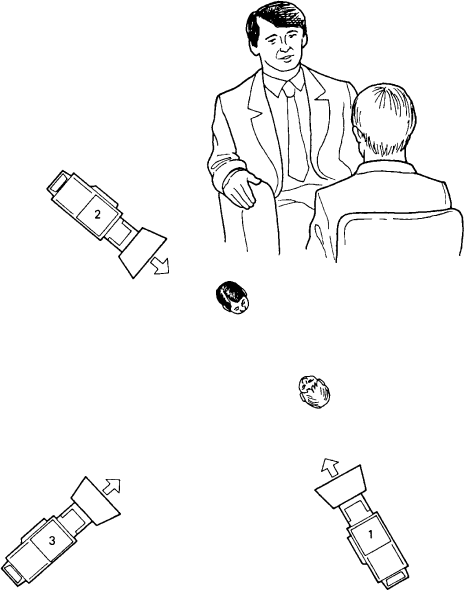Studio Interviewing (1)
The arrival of the journalist/presenter or anchor has meant a broadening of the role beyond the straightforward reading to camera. Live studio interviews within news programmes are no longer the novelties they once were, and anyone aspiring to a permanent studio-based role needs to develop the technique.
The difference between interviewing on location and in a studio is more than a matter of the difference between a live broadcast and an edited recording. Transferred to the confines of a studio, almost any interview appears to take on a more confrontational nature, created in part by the technical paraphernalia of cameras and lights, which add an air of unreality to the proceedings.
The interview’s test
Your skill in interviewing live is tested to the full by the need to:
• Make the interview flow.
• Extract the best from the subject as a duty to the audience.
• Avoid making grammatical or editorial errors which cannot be corrected.
• Cover all the relevant ground before the interview runs its allotted duration.
This task is rarely made easier by the inteview subject. Canny, ring-wise politicians have the ability to make mincemeat of interviewers if they have a mind to do so.
Part of your difficulty with these interviews is a natural tendency to play fair by your visitors and not to appear aggressive, so those who have developed the infuriating but devastating technique of ignoring your questions and answering their own can be very hard to put in their place.
An added drawback is that the public usually relishes the sight of an interviewer on the retreat. Equally, many big-name interviewers become as famous as those who regularly make the headlines, and the gladiatorial nature of an interview between people who socialise off-screen can sometimes be no more than play-acting. That much is often made clear by their behaviour towards each other before or after the event.
Interview one plus one
Most live interviews in the studio are between two people. The set should be designed so they face more or less opposite. If they sit side-by-side they will be looking towards each other in profile and the audience will seem to be excluded. Camera positioning should be such that the subject talks to both the interviewer and the audience. This is best achieved with a three-camera setup: one trained on the interviewer, one on the interviewee, and one on a two-shot of both.
Interview one plus one
A three-camera set-up. Camera 1 is trained on the interviewee, Camera 2 on you and Camera 3 covers both participants in a two-shot.

